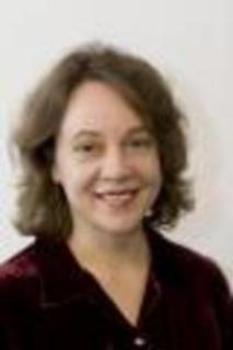This text-based course is a written transcript of the recorded course, “Evidence-based Treatment Strategies for Childhood Apraxia of Speech” presented by Christina Gildersleeve-Neumann on April 21, 2011.
This text is being provided in a rough draft format. Communication access realtime translation (cart) is provided in order to facilitate communication accessibility and may not be totally verbatim. The consumer should check with the moderator for any clarifications of the material.
>> Amy Hansen: Good afternoon, everyone and welcome to today's Expert e‑Seminar, “Evidence‑Based Treatment Strategies for Childhood Apraxia of Speech”, presented by Dr. Christina Gildersleeve-Neumann. Dr. Gildersleeve-Neumann is an Associate Professor in Speech and Hearing Sciences at Portland State University in Portland, Oregon. Here research and clinical areas of interest are typical and disordered speech acquisition in children from birth to 6 with an emphasis on motor-based treatment approaches for Childhood Apraxia of Speech and on multilingual populations. She has published articles and presented nationally and internationally on both topics. Christina was a member of the ad‑hoc committee which developed a position statement and technical report for ASHA members on apraxia in children. She was an invited speaker at the 2009 annual ASHA convention on treatment for CAS. So, welcome, Dr. Gildersleeve Neumann, and thank you for sharing your expertise with us today.
>> Dr. Christina Gildersleeve Neumann: Thank you, Amy. It is nice to be here. And a pleasure to talk with SpeechPathology.com. Welcome to all the participants. What we're going to do today is look at what we currently know about treatment for CAS, some of the studies out there that have been published or peer-reviewed on apraxia of speech, the treatment of it and think about what all of us as speech pathologists already know for motor treatment for speech disorders and apply them as we think about kids with apraxia of speech.
I'm going to do a little bit on the background for CAS and what the position statement from ASHA has directed us to think about as the core pieces of apraxia of speech in children. I want to just make it clear to everyone that when I talk about childhood apraxia of speech I'm talking about all of these different terms. We've had a lot of different terms in the field used for childhood apraxia of speech and for varying theoretical frameworks but at this point in time we're referring to all of them when we use the term ‘CAS’.
AOS VS. CAS
I also want to make a distinction between childhood apraxia of speech and acquired apraxia of speech - the adult version of apraxia. When we think of apraxia for the most part we're thinking about difficulties in motor planning as being the core source or the reason that the difficulties with speech and intelligibility of speech are seen. That motor planning that is seen in CAS was originally observed in adults with apraxia of speech and a lot of what we think about when we think of childhood apraxia of speech comes out of what we know about adults. But as we think about how we treat children, I think there's an important distinction that needs to be made as Maassen noted in 2002. When we treat children, we're treating a phonological system that hasn't yet developed. It isn't there. In adults we're looking at treating someone who has acquired apraxia of speech as taking someone who had an intact phonological system as an adult who learned how to produce the sounds of their language, learned the rules for sounds in their language. What we're doing as therapists with acquired apraxia of speech - adult onset - is trying to find strategies to tap back into what they already had. With children we're trying to build a phonological system. That is what we're really trying to do in treatment is help thembuild that sound system. So some of the treatment will look different.
CAS Current Diagnosis
At this point in time CAS is a behavioral diagnosis. We're deciding whether or not a child has apraxia based on their speech output. There has to be enough speech output to note whether the signs of apraxia are there. And what we're looking for to give that diagnosis of apraxia are symptoms that are different than a functional speech sound disorder. Children with functional speech sound disorders in CAS will show similarities and will have overlapping signs but the current diagnosis of CAS relies on symptoms that aren't typically seen in a functional speech sound disorder.
Childhood Apraxia of Speech – April 2007
Here is the current definition of childhood apraxia of speech. It comes out of the 2007 Position Statement from ASHA. At this point in time we think that the core impairment in an individual with CAS is in that planning of the movements necessary to produce speech sounds. They're having difficulty telling their articulators what to do in a consistent manner. Of course this difficulty in planning or programming would be in the absence of a known neurological impairment that may result in that programming or planning difficulty. So if you have a known weakness of articulators, such as pediatric dysarthria, and you expect there might be some hypernasality, for instance. Even though that could be seen as difficulty in moving the velum needed in speech, that consistent hypernasality would not be considered a cause of CAS even if it does affect motor planning. You could have both apraxia of speech and pediatric dysarthria but you would be looking for signs of CAS above and beyond what you would predict from the dysarthria.

